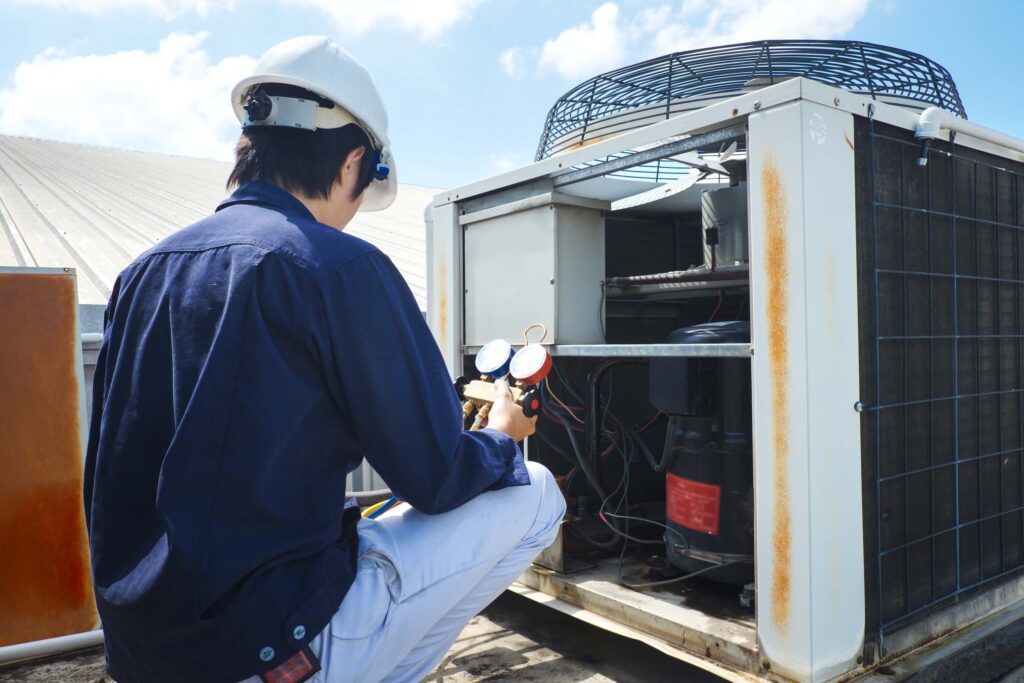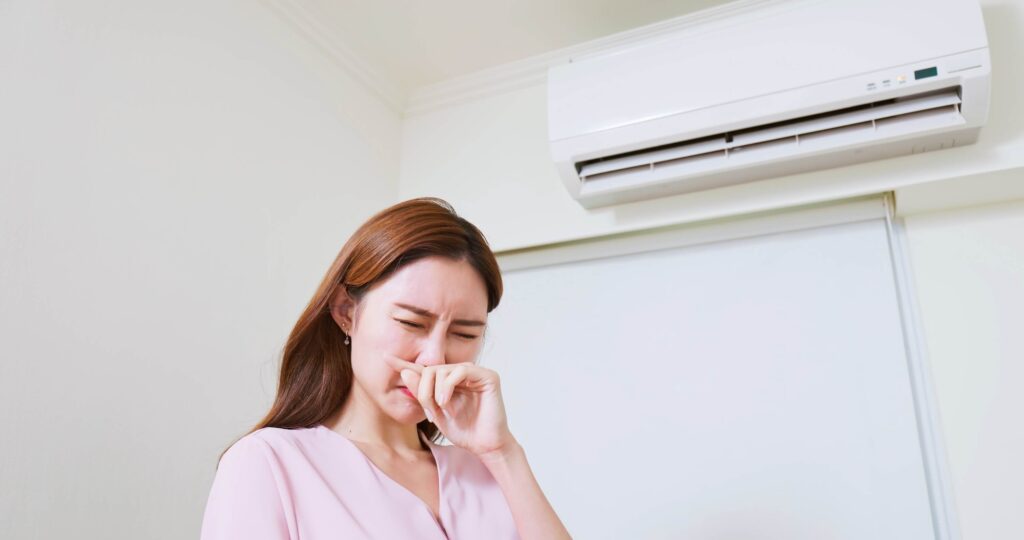A professional HVAC tune-up includes tasks like inspecting, cleaning, testing, and adjusting various parts of your heating and cooling system to help keep it running efficiently. This routine maintenance can involve checking refrigerant levels, tightening electrical connections, lubricating moving parts, and replacing air filters. Each step targets common problem areas to prevent breakdowns and unexpected repairs.
HVAC systems lose efficiency and reliability over time without periodic attention. Regular tune-ups help maintain airflow, improve indoor air quality, and can even extend equipment lifespan. This overview details what homeowners can expect from a comprehensive service, offering clarity on the actual value of a professional tune-up.
Knowing exactly what is included in a tune-up makes it easier to schedule the right service at the right time. Understanding these steps helps homeowners recognize the importance of regular HVAC care for both comfort and cost savings.
What Is Included in a Professional HVAC Tune-Up?
A professionally-done air conditioning tune-up process is a detailed service visit that ensures heating, ventilation, and air conditioning systems operate efficiently and safely. This process covers a comprehensive inspection, filter replacement, thermostat calibration, and safety control testing.
Professional HVAC Inspection
A technician conducts a thorough inspection and cleaning of the HVAC unit. The goal of our HVAC services is to identify any existing issues and prevent future breakdowns. Every major component — including condensers, evaporator coils, blower components, and drain pans — is checked for wear, corrosion, and blockages.
The professional HVAC inspection also involves assessing refrigerant levels, checking belts and motors, and reviewing the general condition of the system. Proper airflow is evaluated by measuring air output at vents and identifying obstructions.
Visual checks are completed using a standardized HVAC maintenance checklist to verify that the air conditioning and heating systems meet manufacturer and safety standards. This step ensures all essential parts run as intended.
Air Filter Replacement and Cleaning
A key part of every tune-up is checking and replacing air filters. Technicians remove the current air filter and inspect it for dirt, dust, and debris. If the filter is clogged or excessively dirty, it is replaced with a new one that matches the HVAC system’s requirements.
If the filter is reusable, it is cleaned and reinstalled. Maintaining a clean air filter is critical for proper airflow and indoor air quality.
A clogged or old filter forces the system to work harder, reducing efficiency and increasing energy costs. Regular attention to filter maintenance extends the equipment’s lifespan and supports better performance.
Thermostat Calibration and Testing
Thermostat calibration ensures the device measures and controls temperature accurately. The technician verifies the thermostat’s readings against a calibrated thermometer, adjusting settings if necessary for optimal performance.
Testing includes checking the response time and functionality by adjusting set points and monitoring the system’s reaction. If the thermostat uses batteries, these are tested or replaced.
A properly calibrated thermostat is essential for comfort and energy efficiency. System settings are reviewed and programmed to match the household’s schedule or needs, preventing unnecessary energy use.
Safety Controls and Electrical Component Check
Safety controls and electrical components are inspected and tested to confirm the system operates safely. This encompasses safety switches, relays, wiring connections, capacitors, and circuit boards.
Technicians look for loose connections, frayed wires, or signs of wear and overheating. Voltage and current checks ensure all parts function within specifications.

A malfunction in these components can create hazards or cause system failure. The technician documents and addresses issues immediately, maintaining the reliability and safety of the HVAC system.
Essential HVAC Maintenance Procedures
Proper HVAC maintenance focuses on preventing system wear and optimizing performance. Routine care addresses both mechanical and airflow factors, contributing to greater reliability and efficiency.
Lubrication of Moving Parts
Lubricating moving parts is a critical part of any HVAC maintenance checklist. Components such as blower motors, fan motors, and bearings are subject to friction, which can lead to premature wear or system malfunction if left unchecked.
A technician uses manufacturer-approved lubricants to treat specific parts, ensuring smooth operation and minimizing heat buildup. This process also helps reduce electricity consumption, since well-lubricated parts experience less resistance. Signs of inadequate lubrication include squealing or grinding noises and increased energy use.
Lubrication not only extends equipment life but also supports quiet, efficient operation. In modern systems, some motors are sealed and do not require lubrication, so technicians verify the type of motor before proceeding.
Ensuring Proper Airflow and Checking for Blockages
Proper airflow is vital to HVAC performance and occupant comfort. Technicians check air filters, return and supply vents, as well as ductwork for blockages, debris, or dust accumulation. Dirty filters and obstructed vents can reduce system efficiency and lead to uneven temperatures.
A typical HVAC maintenance checklist includes inspecting and replacing filters, clearing registers, and checking for collapsed or disconnected duct sections. Technicians may use airflow measuring tools to ensure the system maintains manufacturer-specified output.
When blockages are found, technicians remove debris, repair damaged sections, and ensure that all pathways are clear. This process supports optimal airflow, reduces strain on the system, and can help lower utility costs.
Benefits of Regular HVAC Tune-Ups
Routine HVAC tune-ups provide measurable advantages, including increased energy efficiency, fewer breakdowns, and longer system lifespan. Technicians catch minor issues early, maintain peak system performance, and support healthier indoor environments.
Improved Energy Efficiency and Cost Savings
A well-maintained HVAC system uses less energy to operate. Clean coils, calibrated thermostats, and proper refrigerant levels allow the equipment to function efficiently, lowering utility bills. Dust and debris can force the unit to work harder, increasing energy usage.
Regular tune-ups typically include filter replacements and inspection of electrical connections. These actions reduce wear and ensure the system doesn’t draw more power than necessary. Service providers often catch small inefficiencies that add up over time, such as slight airflow restrictions or inaccurate thermostat settings.
Extended Equipment Lifespan
Preventive maintenance minimizes the stress placed on key HVAC components. Tune-ups address wear and tear before problems get worse, reducing the risk of early system failure. Tasks like lubricating moving parts and checking for proper alignment help prevent major malfunctions.
When components remain in good condition, air conditioners and furnaces can operate effectively for years past the average lifespan. Neglect, on the other hand, often leads to premature replacements and higher long-term costs.

Enhanced Comfort and Indoor Air Quality
Regular service helps maintain steady temperatures and balanced airflow. Technicians calibrate controls and clear blockages affecting distribution, leading to fewer hot and cold spots. Clean filters and coils improve both air movement and filtration, limiting dust, pollen, and other allergens in living spaces.
Properly tuned HVAC equipment removes humidity more efficiently in the summer and heats evenly in the winter. Improved filtration also means families breathe cleaner air, which is important for those with allergies or respiratory issues.
Prevention of Costly Repairs
Tune-ups help spot issues like worn belts, loose electrical connections, or failing capacitors before they cause breakdowns. Early intervention is less expensive than emergency repairs during peak heating or cooling seasons.
Service technicians often use checklists to identify risks during each visit. Addressing these items proactively cuts down on unexpected service calls and reduces the likelihood of system failure when temperatures are extreme.
Why Choose Service Air Eastern Shore for Your HVAC Tune-Up
Service Air Eastern Shore provides residential and commercial HVAC tune-ups led by trained technicians.
Customer-Focused Approach
Service Air Eastern Shore delivers HVAC maintenance with attention to individual customer needs. Scheduling is flexible, and staff communicate clearly about appointment times and work details.
Clients receive detailed service checklists and honest feedback on their system’s condition. Routine follow-ups make sure any repairs or recommendations are explained and understood.
Technicians treat homes and businesses respectfully, maintaining clean worksites and minimizing disruptions. Customers can expect transparent pricing without hidden fees. For any maintenance questions or needs, responsive support is readily available by phone or online forms.
Skilled and Experienced Technicians
Each technician at Service Air Eastern Shore completes comprehensive industry training. Our team stays updated on the latest HVAC technologies, brands, and standards relevant to both residential and commercial equipment.
Technicians are familiar with tune-ups for a range of systems, including air conditioners, heat pumps, and furnaces. They use diagnostic tools and manufacturer-recommended procedures to ensure each unit is thoroughly inspected and maintained.
Before leaving any job site, technicians verify proper system operation and address customer concerns. Ongoing education requirements ensure service staff maintain their certifications and technical expertise year-round.
Commitment to Quality and Satisfaction
Every HVAC tune-up is backed by Service Air Eastern Shore’s commitment to delivering consistent, reliable results. Our company follows established maintenance checklists and quality assurance protocols for every service visit.
If it’s been a year or more since your last visit from an HVAC technician, contact us to schedule a tune-up.





